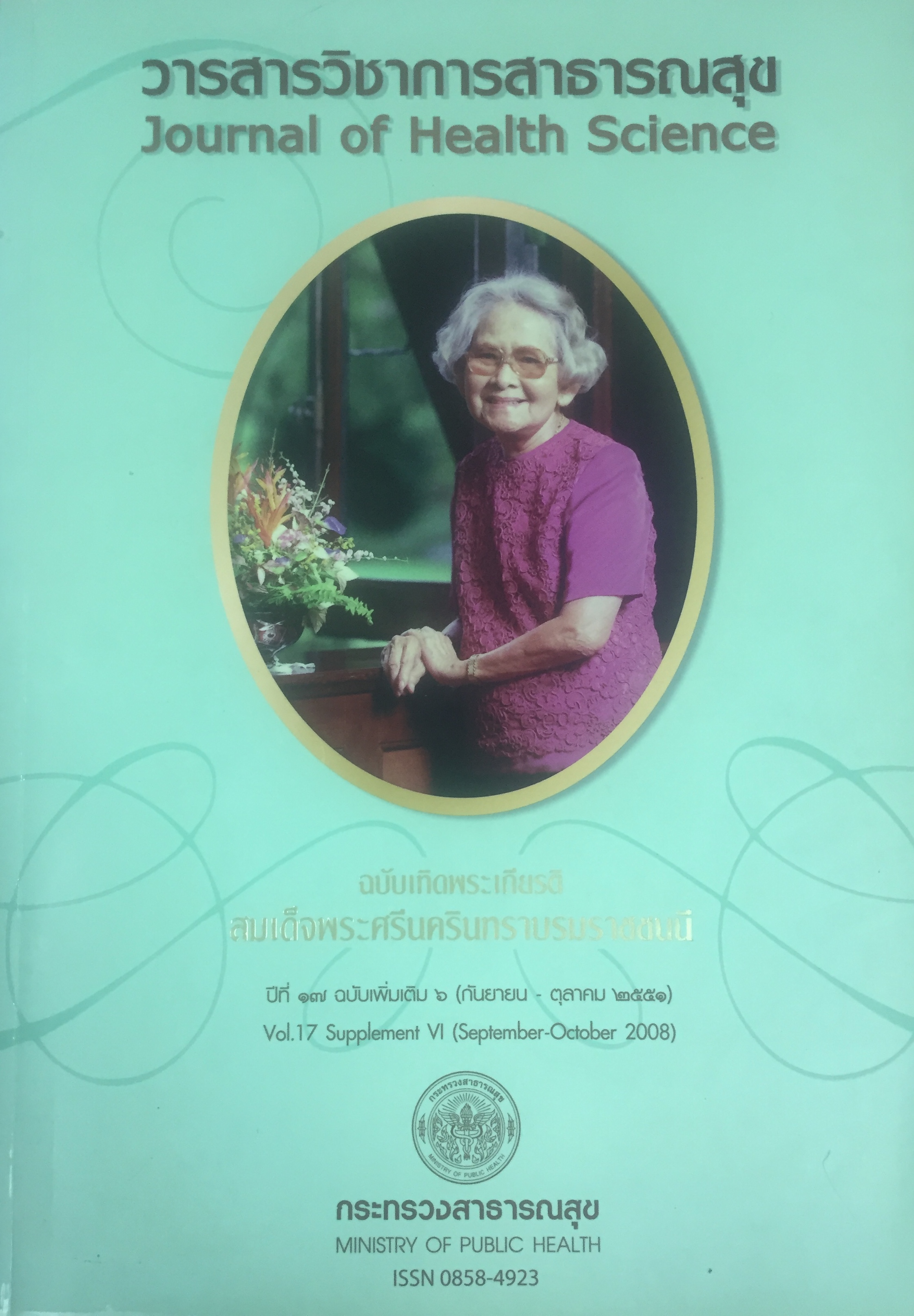รูปแบบการจัดสรรงบประมาณโครงการหลักประกันสุขภาพถ้วนหน้า จังหวัดนครราชสีมา พ.ศ. 2544-2550
คำสำคัญ:
โครงการหลักประกันสุขภาพถ้วนหน้า, การวิเคราะห์จุดอ่อน, จุดแข็งบทคัดย่อ
การศึกษาครั้งนี้เป็นการวิจัยเชิงพรรณนาโดยการวิเคราะห์เอกสาร (documentary research) มีวัตถุประสงค์เพื่อศึกษารูปแบบการจัดสรรงบประมาณโครงการหลักประกันสุขภาพถ้วนหน้าจังหวัดนครราชสีมาพ.ศ. 2544-2550 ศึกษาจุดอ่อน จุดแข็ง ของรูปแบบการจัดสรรงบประมาณโครงการหลักประกันสุขภาพ ถ้วนหน้าที่จังหวัดนครราชสีมาเลือกมาใช้ โดยการเก็บข้อมูลจากเอกสารที่เกี่ยวข้อง ได้แก่ หนังสือ บทความบทวิชาการ บทบัญญัติกฎหมาย ข่าว และเอกสารอื่น ๆ ที่เกี่ยวข้อง พบว่าการปรับเปลี่ยนนโยบายจากส่วนกลางบ่อยครั้งและไม่ชัดเจน การจัดสรรงบประมาณอย่างจำกัด ปัญหาโครงสร้างเป็นจังหวัดขนาดใหญ่มีจำนวนบุคลากรมาก ความแตกต่างด้านพื้นที่ ระยะห่างของแต่ละอำเภอ ฐานะยากจน สภาวะสุขภาพของประชาชนในจังหวัดนครราชสีมาทำให้การจัดสรรงบประมาณโครงการหลักประกันสุขภาพถ้วนหน้าในรูปแบบใดก็ตามยังพบปัญหาสถานบริการขาดสภาพคล่องตัวทางการเงิน เนื่องจากงบประมาณส่วนใหญ่จะถูกนำไปใช้ในการดำเนินการรักษาพยาบาลซึ่งเป็นงานในเชิงรับ ส่วนการดำเนินงานการส่งเสริมสุขภาพในระยะแรก ๆ ก่อนข้างน้อย ต่อมาในระยะหลัง ๆ เริ่มงานสร้างเสริมสุขภาพมากขึ้น เน้นงานเชิงรุก ดังนั้นจึงปรับเปลี่ยนการจัดสรรเงินโดยกำหนดการใช้จ่ายเงินงบส่งเสริมสุขภาพที่ชัดเจน ให้เน้นงานเชิงรุก เพื่อลดอัตราการเจ็บป่วย
เมื่อวิเคราะห์จุดอ่อน จุดแข็ง ของรูปแบบการจัดสรรงบประมาณโครงการหลักประกันสุขภาพถ้วนหน้า จังหวัดนครราชสีมา พบว่า จุดอ่อนของการจัดสรรเงิน คือตัดเงินไว้ที่กองกลางจำนวนค่อนข้างมาก ทำให้สถานพยาบาลมีรายรับลดลงส่งผลกระทบต่อสภาพคล่องทางการเงิน ส่วนการตัดเงินเฉพาะสถานบริการที่มีประชากรมาก ทำให้หน่วยบริการขนาดเล็กไม่พยายามที่จะพัฒนาตนเองในด้านการบริหารจัดการ ส่วนจุดแข็งของการจัดสรรงบประมาณที่ตัดเงินไว้ที่กองกลางในจำนวนที่เหมาะสมและตัดเงินทุกหน่วยบริการทั้งหน่วยบริการที่มีขนาดใหญ่และขนาดเล็ก ทำให้หน่วยบริการพยายามที่จะพัฒนาตนเองและหาแนวทางในการบริหารจัดการที่ดี และการหา fixed cost ที่แท้จริง ทำให้การกำหนดค่าใช้จ่ายได้ชัดเจนและอยู่บนพื้นฐานความเป็นจริง การจัดสรรเงินสร้างสุขภาพที่เน้นหนักงานด้านส่งเสริมสุขภาพและกำหนดการดำเนินงานสร้างสุขภาพที่ชัดเจน ทำให้หน่วยบริการได้เห็นความสำคัญและลดอัตราการป่วยของประชาชนในพื้นที่ จะสามารถลดค่าใช้จ่ายในด้านการรักษาพยาบาลต่าง ๆ ได้
Downloads
ดาวน์โหลด
เผยแพร่แล้ว
วิธีการอ้างอิง
ฉบับ
บท
การอนุญาต
ลิขสิทธิ์ (c) 2018 วารสารวิชาการสาธารณสุข

This work is licensed under a Creative Commons Attribution-NonCommercial-NoDerivatives 4.0 International License.







